You may be asking why I want to know what birds have red heads? Here is the story. Moving from LA to the East Coast you notice many new things, not least among them, new kinds of birds (my favorite). As soon as we settled into our new house — located in Lewes, DE — I unpacked my bird feeders and stared out my window in great anticipation. What kind of feathered customers would I attract?
My first surprise were the red-winged blackbirds, right up close and personal. I had only ever seen these epaulette-wearing wonders with binoculars, on So. Cal. birding trips. Then came a bright red cardinal, another surprise. As I started seeing even more cardinals on my walks, I began looking for them, with a greater appreciation of red birds in general.
The question arose, how many red-colored bird types there are in the US? Answer: Too many. I thus decided to identify the most common red-headed birds one can reasonably expect to see here in Delaware, and check off a few that I missed in LA.
Words that Describe Bird Heads
But before jumping in, here’s a quick fact to impress your friends: did you know that ornithologists use a lot of cool, archaic words to describe bird heads? To wit, the following four terms all refer to the ‘head’ of the birds you’ll see in my list:
- “Crown” – This is the official birding term for the body part of birds upon which birds typically find their beak. Linguistically it’s a metaphor, invoking an item placed on the head, a crown, to refer to the head itself. Examples: “Ruby-crowned Kinglet,” “White-crowned Sparrow.”
- “Pate” – an archaic word of uncertain origin. It is used 28 times in Shakespeare and also refers to the head. Shakespeare example: “a curled pate will grow bald” (Henry V). Bird example: Red-pate Cisticola. (Actually you won’t find this bird in my list, because it doesn’t live in North America, but it’s fun to know about anyway.)
- “Poll” – another archaic word for head, also found in Shakespeare. Shakespeare example: “All flaxen was his poll” (Hamlet). Bird example: “Common Redpoll”
- “Pileated” – from the Latin pileatus, meaning “wearing a felt cap,” another linguistic metaphor invoking an item placed on the head to refer to the head itself. Bird example: “pileated woodpecker.’
Ornithologists also use a smorgasbord of terms to describe the idea of “red” – i.e., “scarlet,” “ruby, “vermillion,” “crimson,” and “rufous” are just a few.
Now for my list. In what follows you will see only the most common red-headed birds we’re most likely to find around our homes, though admittedly some will be rare. I’ll start with my new urban east-coast habitat (aka, Delaware) and radiate out to California, my original human habitat.
East Coast
1. House Finch
The most common red-headed bird you are likely to see at your bird feeder, both on either U.S. coast, is the beautiful, unpretentious house finch.
Identification
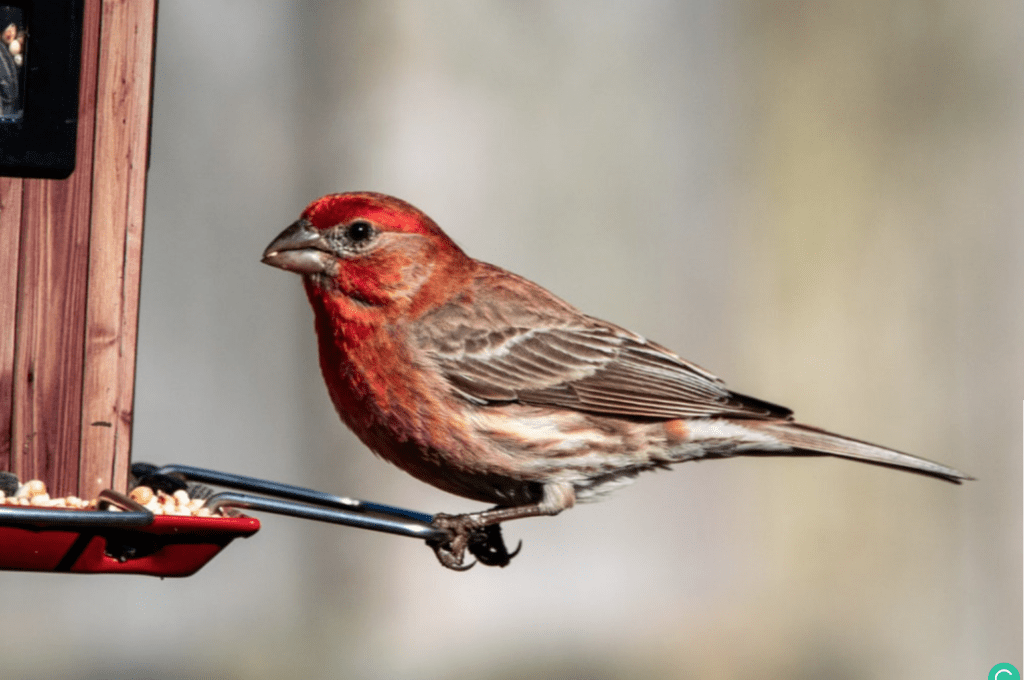
House Finches are about the same size as sparrows, but male house finches have pretty, rosy faces, rosy breasts and even a rosy rump (which you’ll probably never see). The only way I can imagine that we would see their rump feathers are when they’re in flight, and then only if we’re looking down at them.
Female finches are more difficult to differentiate from their sparrow counterparts, as both are brown in color. To see the difference, you’ll want to look at the female’s belly: if it’s whitish with brown streaks it’s a female finch; if’s tannish with no streaks, or if you see a white or brown eyeline stripe, it’s probably a female sparrow. Sometimes you see a little eyeline stripe on female house finches too, so, the belly is the best giveaway.
Diet
House finches love seeds, especially black-oil sunflower seeds, but they sometimes also eat insects and fruits. If you fill your feeders up with sunflower seeds, you are almost guaranteed to see several finches partake.
Habitat
Finches are very comfortable in urban environments, but you can also find them in other habitats, from arid scrub to open woodlands. They apparently began as western birds but were introduced to the east coast in the mid-twentieth century. They are now thriving throughout the United States.
Interesting Facts
- Male house finches actually come in many shades of red, from darkish red to light orange. The variation can sometimes be so striking that you might think you’re looking at two different species. The shade of red is apparently determined by their diet.
- Female finches lay pretty, blue eggs, much like robin eggs, but smaller.
- Cowbirds, who don’t build their own nests, often lay their eggs in house finch nests, among others (see photo). This obliges the poor, unsuspecting house finches to raise two sets of babies instead of just their own.
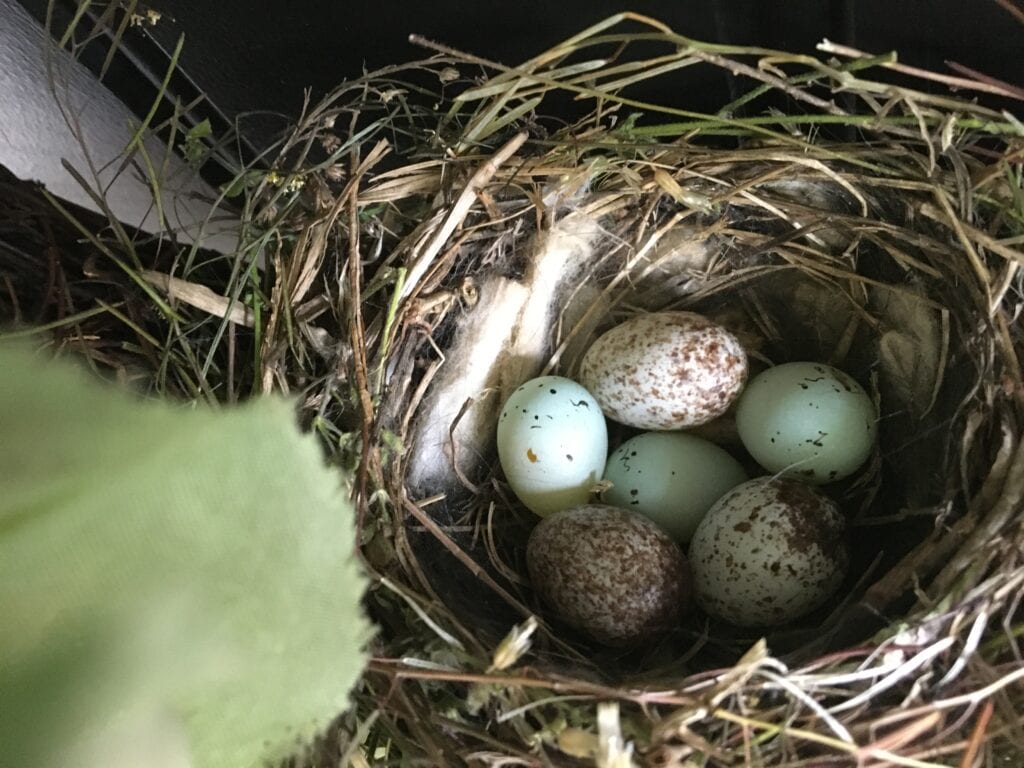
Finch nest in my outdoor wreath. It contains two different sets of eggs. The blue eggs here belong to the finch, the mottled eggs to the opportunistic cowbird. The finches will raise all the babies.
You may want to read our related article, Do Robins Reuse Nests?
Video: House Finches in My Backyard
2. Purple Finch
Identification
Don’t let the name fool you: the Lain species name purpureus means “crimson” or red. If anything, male purple finches are more red and more beautiful than our common house finch.
Male purple finches have a raspberry color head, cap, breast, back and rump, along with brown wings and tail. (Note: Male house finches have a brown cap.) The females of both species look completely similar with the exception that the brown streaked-female purple finch has large white eyebrows.
Diet
These birds love feeders which they will raid for sunflower and millet seeds; they also eat insects and fruit.
Habitat
Common in coniferous and mixed coniferous-deciduous forests, suburbs; on the west coast they can be found in oak canyons and lower mountain slopes. Their numbers are in apparent decline in the East.
Interesting Facts
According to All About Birds, “Purple Finches seem to be losing numbers in eastern North America as House Finches have moved in after being brought to New York City in the 1950s. One study of finch behavior found that Purple Finches lost out to House Finches more than 95% of the times the two birds encountered each other.”
Video: ID Tips: Purple Finch vs. House Finch
On a side note, a very cute finch that doesn’t have a redhead is the goldfinch. If you want to attract them to your garden you may want to read 10 Things to Know About Nyjer Seeds.
3. Northern Cardinal
Next on the list comes the zorro of the bird kingdom, the bright red cardinal, who completes his attire with a striking black mask.
Identification
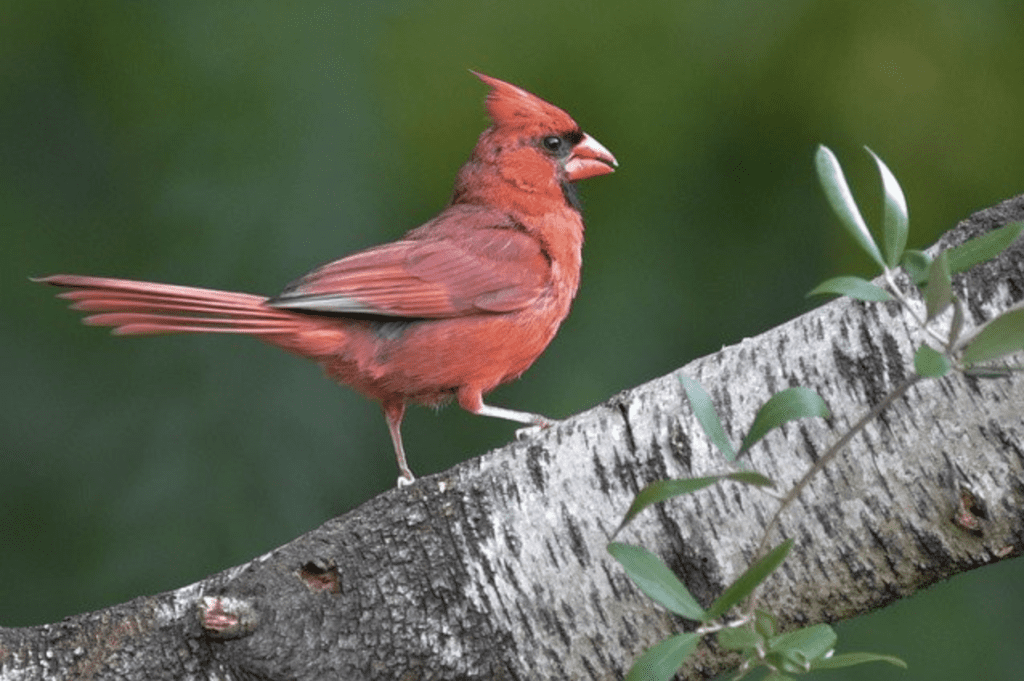
Males: Entirely red except for the black mask. Even their beaks are red. Female cardinals are much different, mainly brown, but they also have a black mask and red beak. Juvenile cardinals look a bit like the female, but they have a gray rather than red bill.
Diet
Cardinals love seeds, which is why you may spot them at your bird feeder, but they also eat insects and fruit.
Habitat
Cardinals are abundant on the edges of woodlands and residential areas. Their population has expanded in the last century, apparently due to an increase in bird feeders.
Interesting Facts
- The name cardinal comes from the Latin word cardinalis, meaning “important” or “pivotal.”
- The cardinal is the official bird of seven U.S. states (Illinois, Indiana, Kentucky, North Carolina, Ohio, Virginia, and West Virginia).
- Males feed their female mates during courtship, and they also feed the couple’s babies by himself while the female builds a second nest.
- Cardinals also don’t mind drinking tree sap from holes drilled by sapsuckers.
Video: Northern Cardinals feeding baby birds
4. Pileated Woodpecker
This bird should probably come later down the list, as other red-headed woodpeckers are more common in this region, but so far this is the only woodpecker I have seen up close in Delaware, playing with another pileated in a field just feet from where I was standing. This was a treat, as they’re normally not easy to find.
Identification

This is the largest woodpecker in North America, and it’s about the size of a crow. Both male and female have the stunning red crest (the showy growth of feathers on their heads), but the red on the male’s head continues down his forehead, whereas the female’s forehead is black. Also, males have a red streak next to their beak which looks like a red mustache; the female’s “moustache” is black.
Diet
Pileated woodpeckers dine mainly on insects, primarily carpenter ants, termites and beetle larvae. They use their bill as a chisel to chip wood in big trees looking for ants and beetles but are also known to occasionally eat suet at bird feeders along with wild fruit and nuts.
Habitat
Native to North America as well territories near the Great Lakes, Canada and parts of the northern Pacific Coast (which is why I never seen a Pileated Woodpecker in Southern California.) They like to make their nests in the trunks of large trees.
Interesting Facts
- This is the woodpecker species upon which the Walter Lanz Studio based their famous 1940s “Woody the Woodpecker” character.
Video: The PILEATED WOODPECKER | The LARGEST in North America!
5. Hairy Woodpecker
Identification
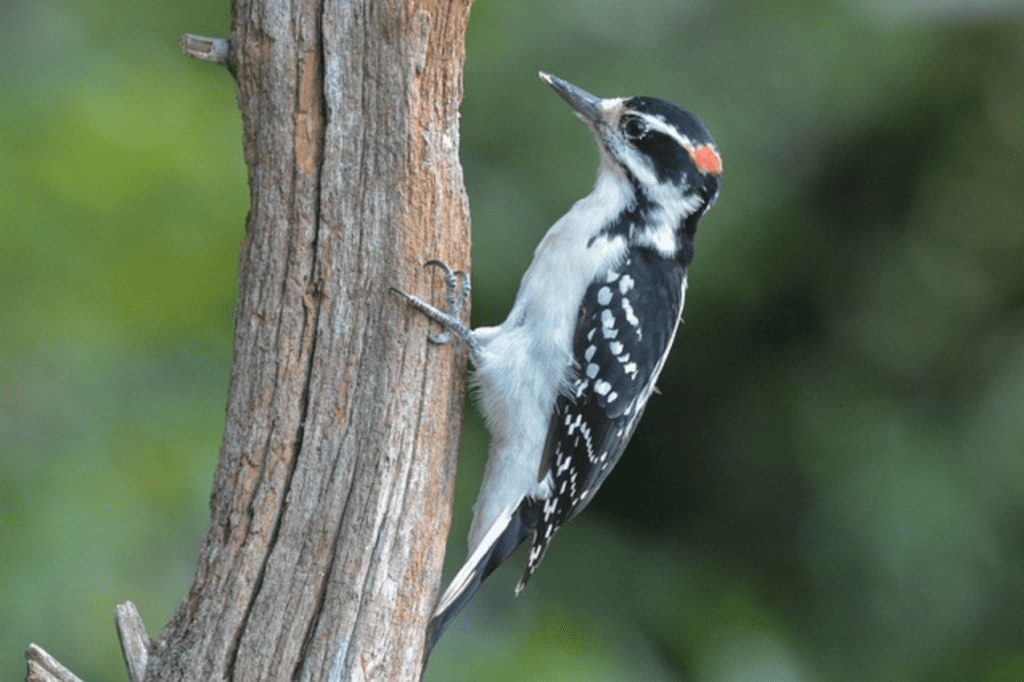
Look for a white back and belly, and black wings with rows of white spots. These larger birds resemble the much smaller Downy Woodpecker, but the Hairy Woodpecker has a longer black beak. For the males you can’t miss the red mark on the back of their heads.
Diet
Hairy woodpeckers love insects, and they have a barbed tongue to extract them from trees, but they’ll also eat nuts, seeds, suet and peanut butter. They don’t mind trying their luck at bird feeders, emitting a sharp chirp right before they land. If you have a wooded backyard and live anywhere in the United States, have your camera ready.
Habitat
Like most woodpeckers, the Hairy woodpecker prefers wooded areas. Trees provide this bird with its favorite food, insects, and offers a perfect nesting place, the hollowed-out the cavity of tree trunks.
Interesting Facts
- They are also good for forest preservation as they eat many destructive forest insects.
- Hairies, like Downies, have tiny bristle-like feathers at the base of their bill to prevent wood dust from entering their nostrils.
- The term “hairy” apparently comes from the long, thread-like white feathers that run down the middle of this bird’s black back.
Video: Hand feeding a male hairy woodpecker
6. Downey Woodpecker
Identification
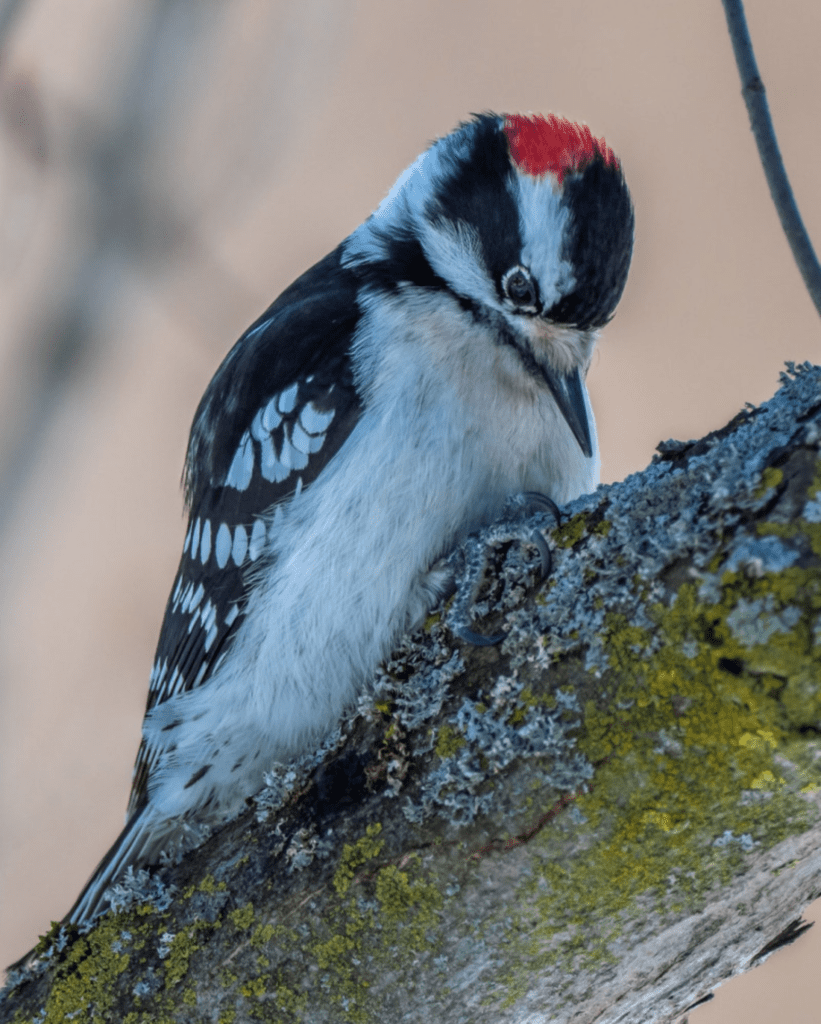
The Downy woodpecker is almost identical to the hairy woodpecker. The only difference is that these birds are much smaller than their “hairy” counterparts. Not only are they much smaller, but they are also the smallest of North American’s woodpeckers.
Diet
Eats insects, seeds, suet and peanut butter, when offered.
Habitat
Wooded areas and backyards across North America.
Interesting Facts
- According to Cornell University’s website All About Birds, the downy woodpecker “eats foods that larger woodpeckers cannot reach, such as insects living on or in the stems of weeds.
Video: Downy Woodpecker
7. Yellow-Bellied Sapsucker
What is the difference between a sapsucker and woodpecker? Someone wrote that sapsuckers are the “sweet-toothed” cousins of the woodpeckers. While woodpeckers drill deep into wood to capture insects, sapsuckers drill shallower holes to get at their favorite food, which is tree sap. They typically create nice, neat lines of horizontal wells around the trunk, and then sip the sap at their leisure.
Identification
Yellow-bellied are medium in size, have a black-and-white checkered back, a pale-yellow belly and a cute red cap.
Diet
Sapsuckers don’t only eat tree sap; they also eat insects as well, who are attracted to their sap wells. Similarly, insect-eating woodpeckers also occasionally imbibe in tree sap. Both types of birds may come to your feeder if you leave out some suet for them.
Habitat
Wooded areas across North America.
Interesting Facts
- Hummingbirds love sapsucker sap wells
- Yellow-bellied sapsuckers don’t vocalize much, but they have been known to mew like a cat.
Video: Yellow-bellied sapsuckers –Woodpecker with a sweet tooth
8. Red-Bellied Woodpecker
Identification
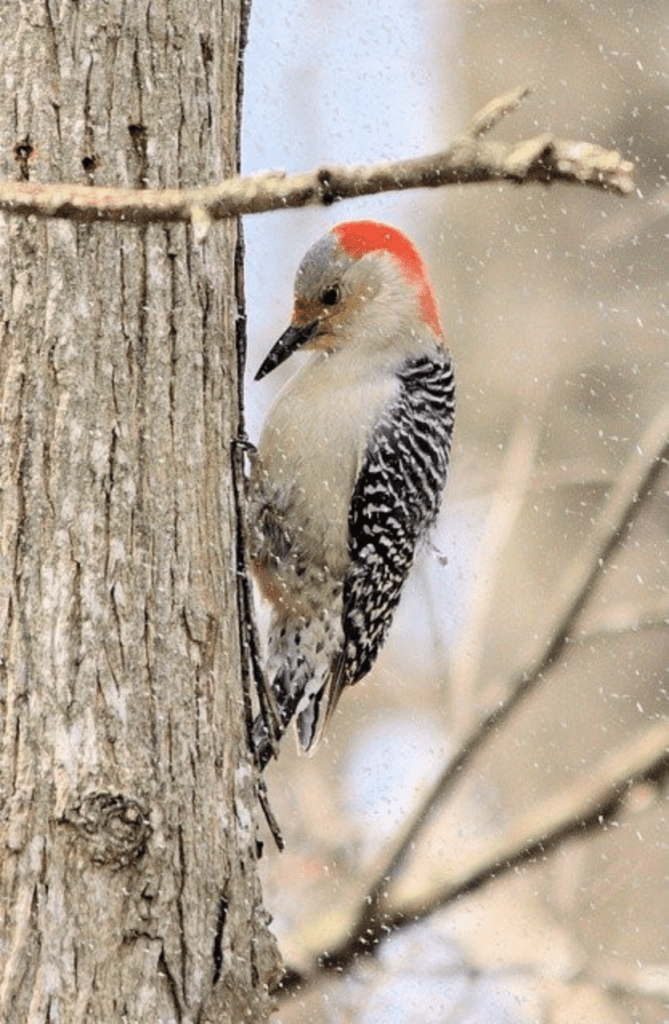
Red crown, red neck and red belly with a beautiful zebra-like black-and-white pattern on their wings. Very colorful bird that abounds in the eastern United States. Note: It’s almost impossible to actually see their red belly in the field.
Diet
Insects, fruits, nuts. Red-bellieds are not shy about coming to seed and suet feeders.
Habitat
Common in mature deciduous woods or mixed pine forests, mainly eastern U.S.
Interesting Facts
Red-bellied Woodpeckers can stick out its tongue nearly 2 inches past the end of its beak. This is especially helpful for them to snatch prey from deep crevices.
Video: The Red-bellied Woodpecker | Huh! Red-bellied?
9. Red-Headed Woodpecker
Identification
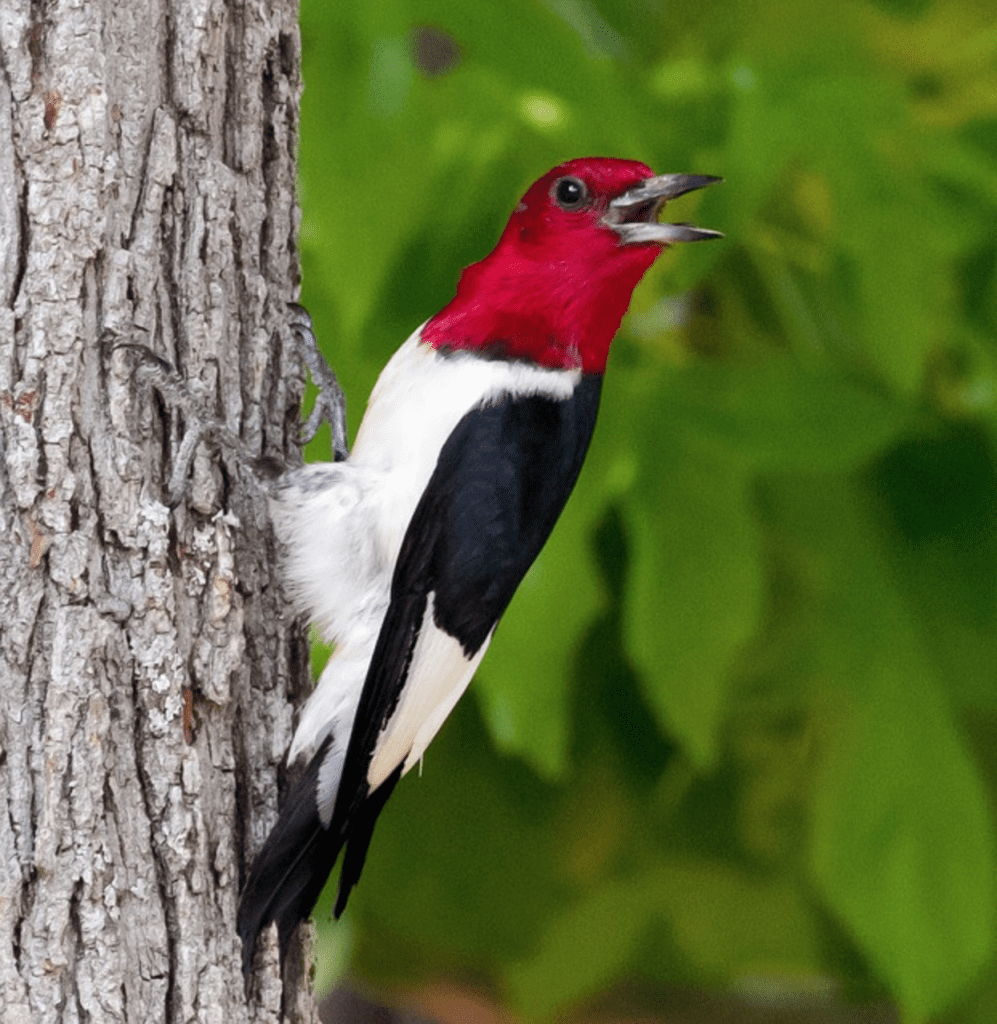
This gorgeous bird is tri-colored. It has an entirely red head and neck with white patches on its wings, while its back and tail are black. There is no discernible difference in color between males and females.
Diet
Their diet consists mostly of seeds, nuts, berries and fruits, but they also like insects, earthworms and spiders.
Habitat
You can find red-headed woodpeckers mostly in southern Canada and the eastern-central United States during the breeding season. They like open woodlands, parks, orchards, rivers and farm country with large, scattered trees.
Interesting Facts
The Red-headed Woodpecker is a clever bird that has adapted to the harsh winters of North America. This bird is one of only four North American woodpeckers known to store food; it’s the only one that covers its bounty with bark or leaves before hiding them in cracks on trees, under tree bark or fence posts.
Video: Red Headed Woodpecker Mating, Nesting, Breeding And Feeding
10. Red Crossbill
Identification

This interesting finch is categorized as ‘uncommon,’ even though they winter in my area on the east coast. Males of the species are brick red in color, while females are actually yellow. Both sexes have heavy heads, short tails, and their most interesting feature, their ‘crossed bill,’ which allows them to break into unopened cones and extract the nutritious seeds they contain.
Diet
Conifer seeds. Their favorites come from pine, hemlock, Douglas-fir, and spruce trees.
Habitat
Red crossbills have been described as “erratic wanderers,” as their search for the fruit of conifers takes them far and wide. This food is apparently precarious because conifers produce seeds unpredictably. Though they live chiefly in mountain forests, crossbills can sometimes appear in towns and backyards far to the south and east of their typical range.
Interesting Facts
Crossbills typically move in big flocks, much like cedar waxwings.
Video: Red crossbill. Flock of the birds drinks water
11. Common Redpoll
Identification
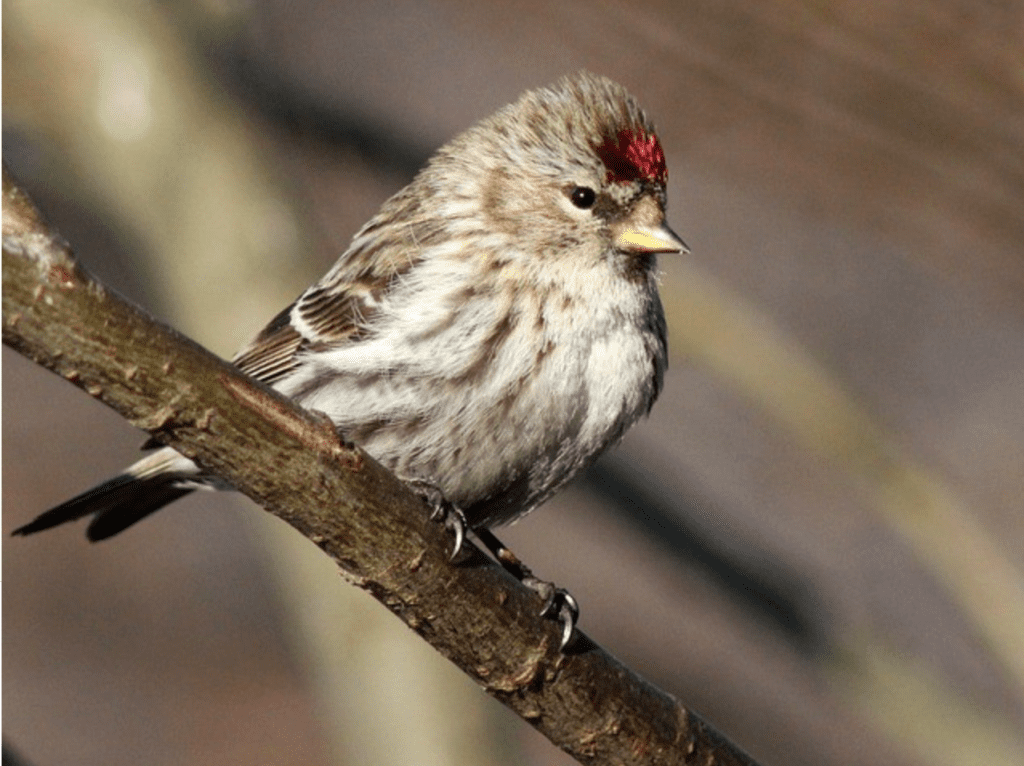
Another member of the finch family, I will be very unlikely to ever see this tiny, adorable bird. They winter in Delaware but spend most of their time in the far north of the continent. Look for a small red forehead patch, black feathering around a yellow bill, and two white wing bars. Males have a pale red vest on the chest and upper flanks.
Diet
Seeds from birches, alders, willows and weeds. At backyard feeders will appreciate thistle and nyjer seeds, though they may also take black oil sunflower or scavenge opened seeds left behind by larger-billed birds.
Habitat
Summer: birches and tundra scrub; winter: weeds, brush, thistle feeders.
Interesting facts
During winter, some Common Redpolls tunnel into the snow to stay warm during the night. Tunnels may be more than a foot long and 4 inches under the insulating snow (see more in All About Birds).
Video: Redpolls Arrive En Masse To Ontario Feeders! – Nov. 2, 2020
12. Ruby-Crowned Kinglet
Identification
This tiny greenish/grey bird has two white wing bars and a white eye ring. And of course, the famous red crown distinguishing the male. But here’s the caveat: Unless you live in the northeast United States, or in northern Canada, you’ll probably never see their gorgeous red patch. It remains hidden until breeding season, when the male proudly displays his colors to woo his intended female. Given that the ruby-crowned kinglet breeding territory is in the north, we in Delaware will only see this cute bird in the winter, when males hide their beautiful red crown.
Diet
Insects and berries.
Habitat
Coniferous and mixed conifer-deciduous forests.
Interesting Facts
The “kinglet” part of this bird’s name comes from the Anglo-Saxon word cyning or “king.” This refers to the male’s ruby crown. The “let” part of the name is a diminutive suffix, meaning “small.”
Video: Ruby-crowned Kinglet Song
13. Summer Tanager
Identification
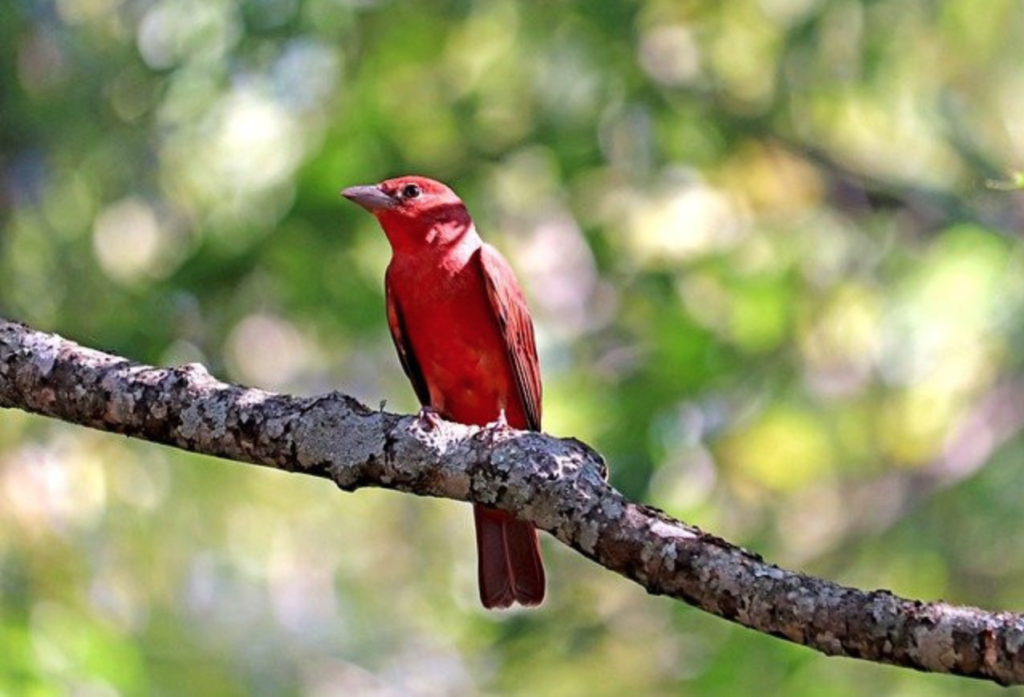
A gorgeous all-red bird that we’re unlikely to see at our feeders because they don’t care for seeds. For males, look for a bright, rosy red bird with darker red wings. Females are mainly yellow with slightly darker gold/brown wings.
Diet
Insects and fruit.
Habitat
This bird lives in woodlands, mainly composed of mixed pine and oak trees. They summer throughout the United States and winter in Central and South America.
Interesting Facts
The Summer Tanager is a bee and wasp specialist. It catches these insects in flight and kills them by beating them against a branch.
Video: Summer Tanager, Hummingbirds, and Baby Wrens!
14. Scarlet Tanager
Identification
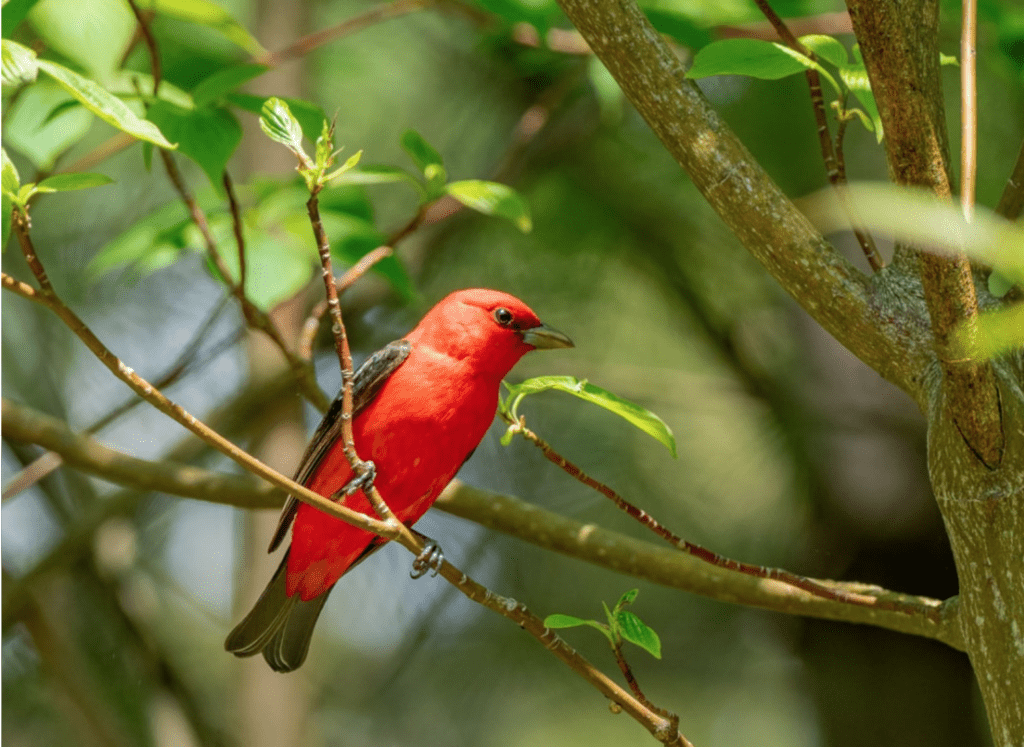
The most dazzling of our two eastern tanagers. Males: bright scarlet red with jet black wings and tail. Ivory bill and dark eyes. Females: drab greenish yellow bird with olive wings and tail.
Diet
Like the scarlet tanager, summer tanagers mainly eat insects and fruit. They visit many kinds of berry plants, including blackberries, raspberries, huckleberries, juneberries, serviceberries, mulberries, strawberries, and chokeberries.
Habitat
Scarlet tanagers spend a great part of their lives high up in the canopies of trees. They prefer mature, unbroken woodlands. Thus, despite its very conspicuous, drop-dead gorgeous plumage, they’re very hard to see. We on the east coast are told to listen for the “raspy, robin-like song” of the male scarlet tanager, which is their best giveaway.
Interesting Facts
The common name “Tanager” comes from a South American Tupi Indian word meaning, “any small, brightly colored bird.”
Video: Scarlet Tanager
And speaking of Tanagers, let’s take a quick stroll through Southern California, to spot the red-headed birds one can find when not working 80-hour weeks.
West
15. Western Tanager
Identification
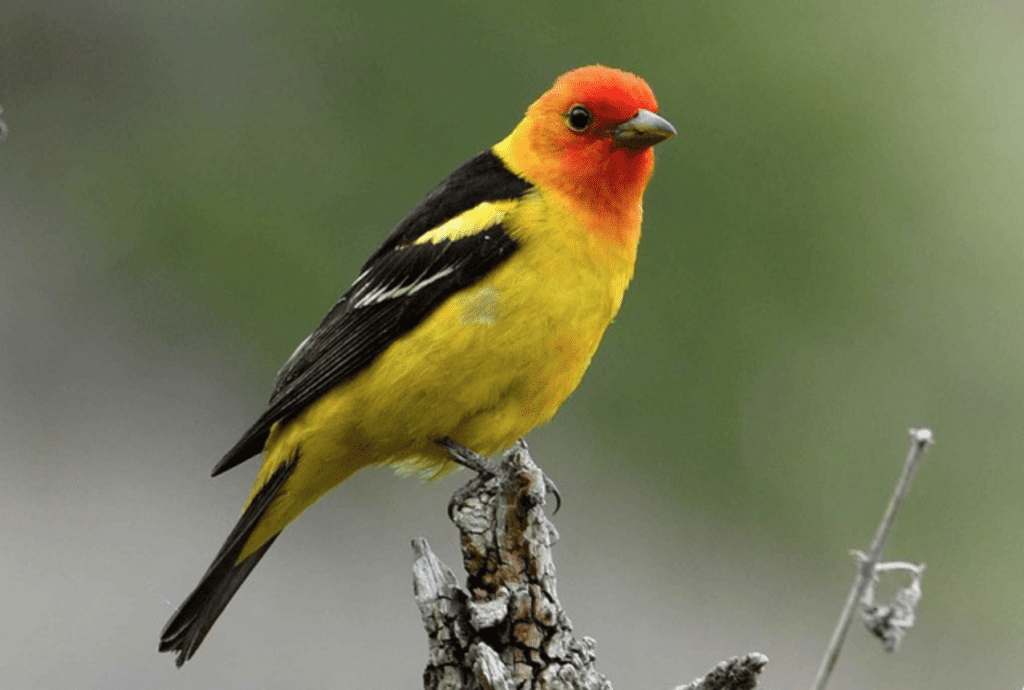
This bird is so popular in Southern California that the LA Audubon names its quarterly publication after it. The red parts of this bird are not pure red, but red orange. The body of the male tanager is bright yellow with black wings. Female tanagers, pretty in their own right, are pale yellow in color.
Diet
Feeds largely on insects during the summer, and fruits and berries in the winter.
Habitat
Mainly found in hilly places, pine, pine-oak woodlands, canyons (of which there are many in So. Cal.) and some coastal slope parks. They like flowering eucalyptus.
Interesting Facts
This species of tanager is more closely related to western grosbeaks and buntings than to the tanagers populating the new world tropics.
Video: Western Tanagers
16. Cassin’s Finch
Identification
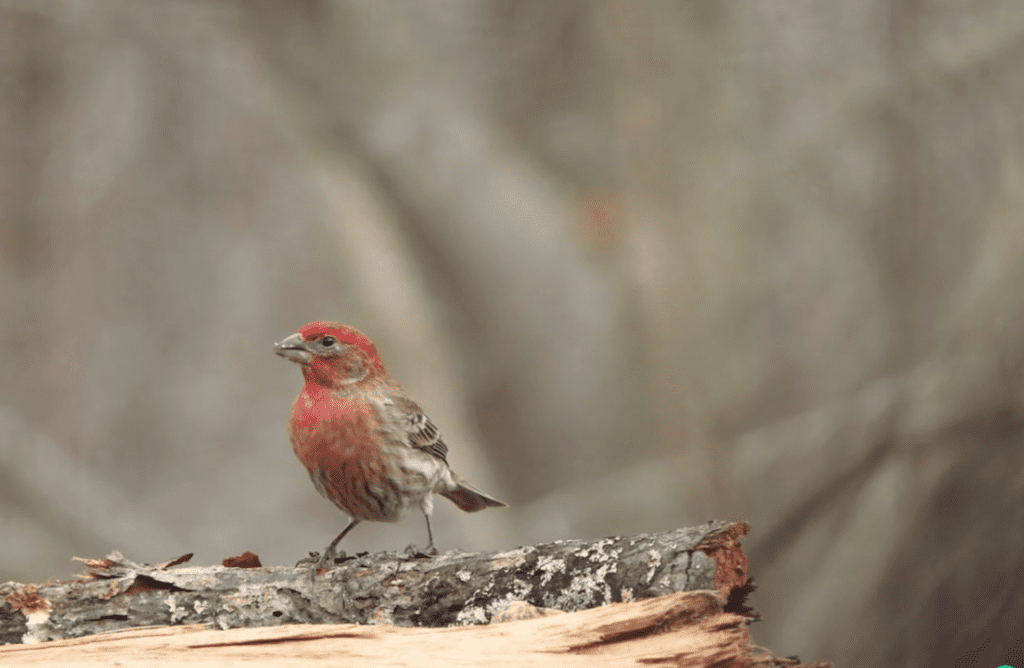
This is a pretty, red finch specific to California. Adult males have the prettiest raspberry red head and breast with dark brown wings. Females have streaky, brown-colored feathers
Diet
Cassin’s finch diet is mostly vegetarian, consisting of seeds, tree buds, and berries. But they can also eat some insects, especially in the summer.
Habitat
Cassin’s finches live primarily in coniferous forests, in the mountains of the western United States. But they can also be found near Southern California and Baja California. In the winter, they may move south to lower elevations for milder temperatures.
Interesting Facts
This bird was named after John Cassin, an American ornithologist from Pennsylvania.
Video: Cassin’s Finch mayhem on the pEEp feeder
17. Vermilion Flycatcher
Identification

I have never seen this spectacular beauty, but they have been sighted on rare occasions in Southern California. The vermillion is the most colorful of the North American flycatchers. Males have a bright red head and belly; they have black wings and a dashing black eye mask. Apart from this mask, they look a bit like the scarlet tanager we saw above; both species are neotropical migrants.
Female vermilions are actually quite charming too. They are subtle gray-brown birds with a warm salmon-red blush-colored underparts.
Diet
As the name implies, flycatchers like their flies, but they also like a wide array of other insects such as grasshoppers, butterflies, honeybees, beetles and crickets. They are known to capture insects on the wing by flying suddenly out from an exposed perch.
Habitat
Vermillion flycatchers can be found in any open country in the American Southwest, including arid scrublands, farmlands, deserts, parks, and canyon mouths.
Interesting Facts
When male Vermilion Flycatchers court females, they bring gifts: often a butterfly or other flashy insect.
Video: Finding the Vermilion Flycatcher (Birding Cypremort Point State Park, Louisiana)
18. Nuttall’s Woodpecker
Identification

This little woodpecker is endemic to California. I’ve this bird at UCLA, in Pasadena and at the Kenneth Hahn Recreational area. He’s a smallish bird — larger than a sparrow, but smaller than a robin. Birds of both sexes have zebra-striped backs, spotted wings, two narrow white stripes across their cheeks, and white bellies flecked with black spots. It’s the males only, predictably, that have a beautiful red crown.
Diet
Like most woodpeckers, these little guys prefer insects for dinner. Among others, they eat beetles, beetle larvae, ants, termites, and millipedes found on oaks, cottonwoods, and willows. They probe into tree bark to reach insects or pick them off bark or vegetation. They also occasionally eat fruit including elderberries, poison oak, and blackberries.
Habitat
Nuttall’s Woodpeckers are residents in oak woodlands from around 900–5,500 feet elevation. Though primarily restricted to oak woodlands in California, they can also be found in wooded suburban areas and woodlands near streams,
Interesting Facts
The Nuttall’s woodpecker is named after Thomas Nuttall, an English botanist and ornithologist. His passion for birds inspired the formation of the first North American birding organization, the Nuttall Ornithological Club, founded in 1873.
Video: Baby Nuttall’s Woodpecker Bird Being Fed By Mother And Father Woodpeckers
19. Acorn Woodpecker
Identification
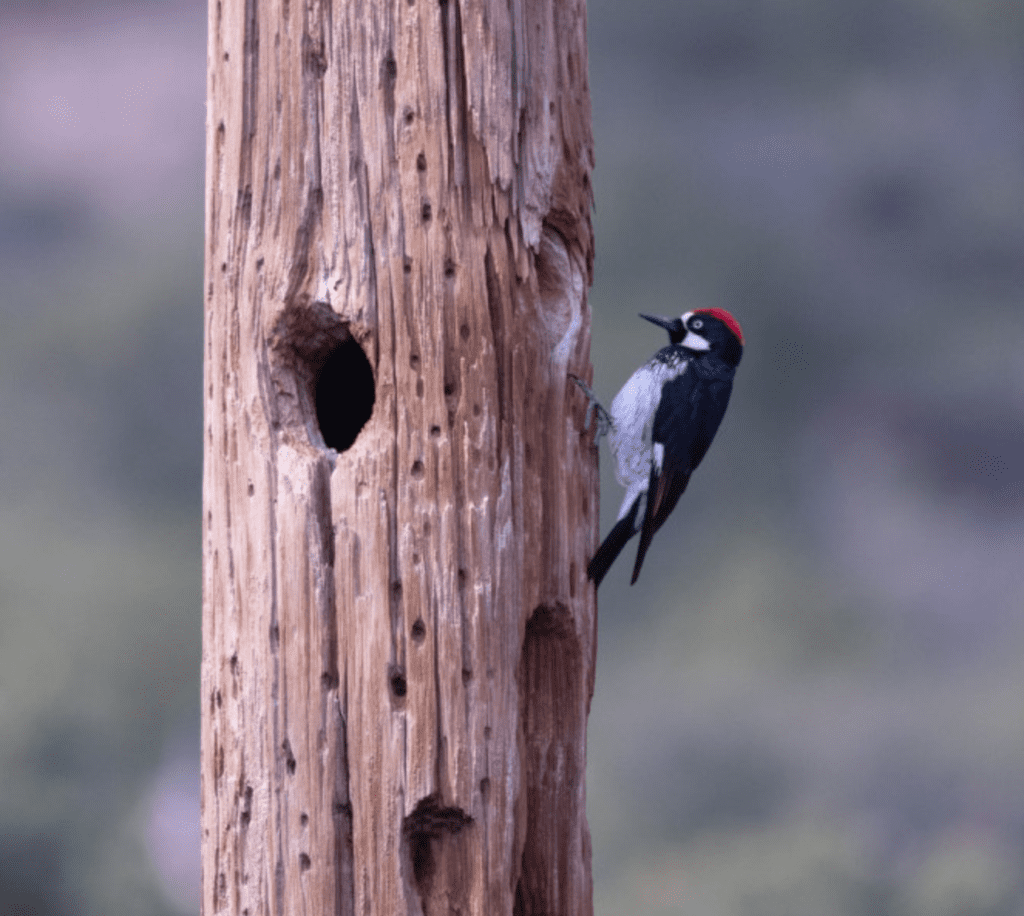
The adult acorn woodpecker is predominantly black all over. The underside is white, the area immediately around beak and eyes are black over a white face, which makes it look like a cute clown face. Both males and females have a red head, but females have less red on the crown than males.
Diet
Acorn Woodpeckers are omnivorous and eat acorns, insects, nuts, fruits, and seeds. However, acorns make up about half of the diet during the winter, thus their name.
Habitat
The acorn woodpecker’s habitat is mostly found in forested areas with oaks. Its range includes coastal and foothill regions of Oregon/California/southwestern USA, south through Central America to Colombia.
Interesting Facts
- Acorn woodpeckers are the only animal that stores acorns in holes carefully carved high on trees, inaccessible to most common tree-dwelling animals.
- Acorn woodpecker calls sound like laughter.
Video: You’d Never Guess What an Acorn Woodpecker Eats
20. Red-Breasted Sapsucker
Identification

Talk about a red head, this little guy is easy to spot with his entirely red head and throat. And what is really quite unusual: the female of this species is identical to the male. They have a yellow-ish belly with black stripes, and they also have white wing bars.
Diet
Like other sapsuckers, the Red-breasted sapsucker likes tree sap, insects and fruit.
Habitat
The Red-breasted Sapsucker is a denizen of the coniferous forests of the northern Pacific Coast, usually found at middle or lower elevations.
Interesting Facts
According to Kimball Garret, Jon Dunn and Bob Morse, despite the superficial damage that sapsuckers inflict on trees, there is little evidence to suggest they are an important cause of tree death.
Video: Red Breasted Sapsucker
The End
This completes the list of the most common red-headed birds one might reasonably be expected to see on the east and west coasts.
Related Posts:

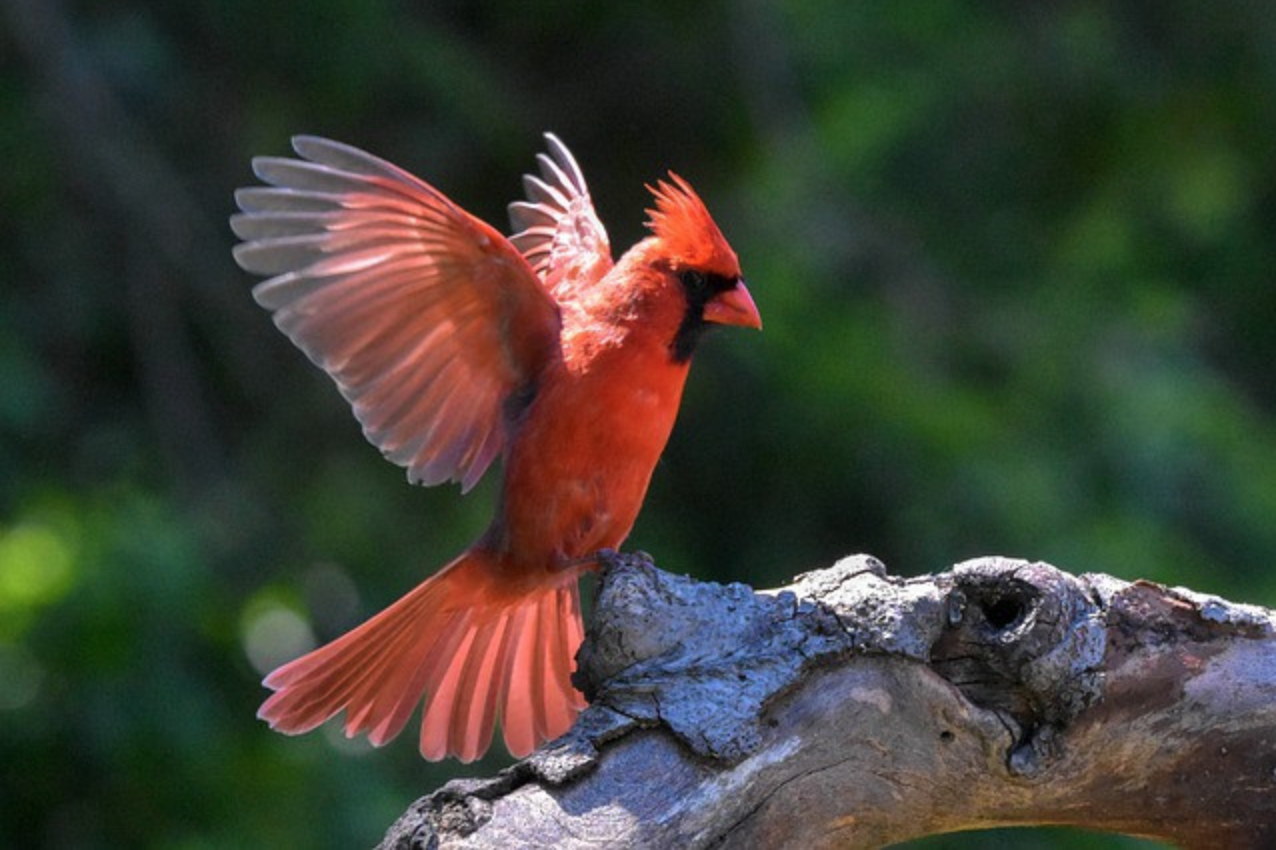

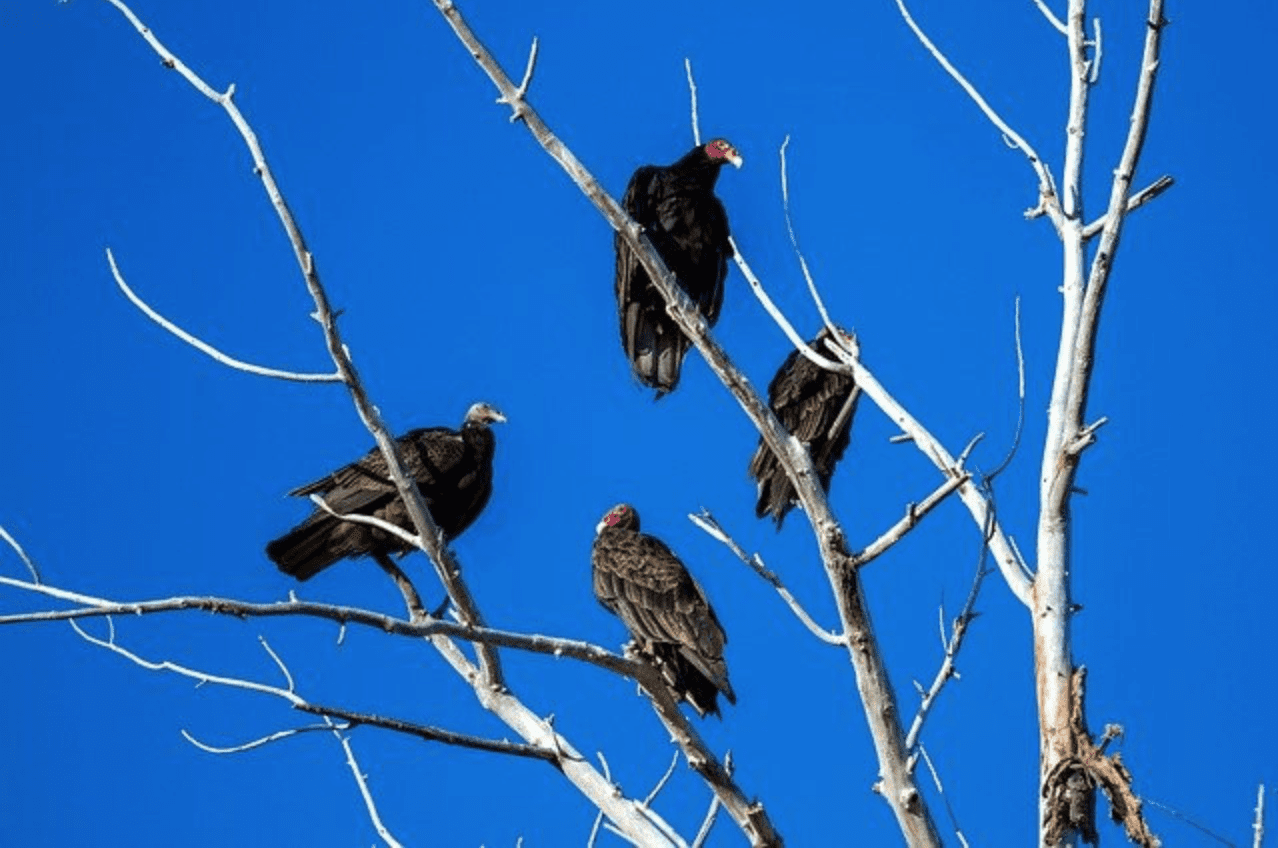
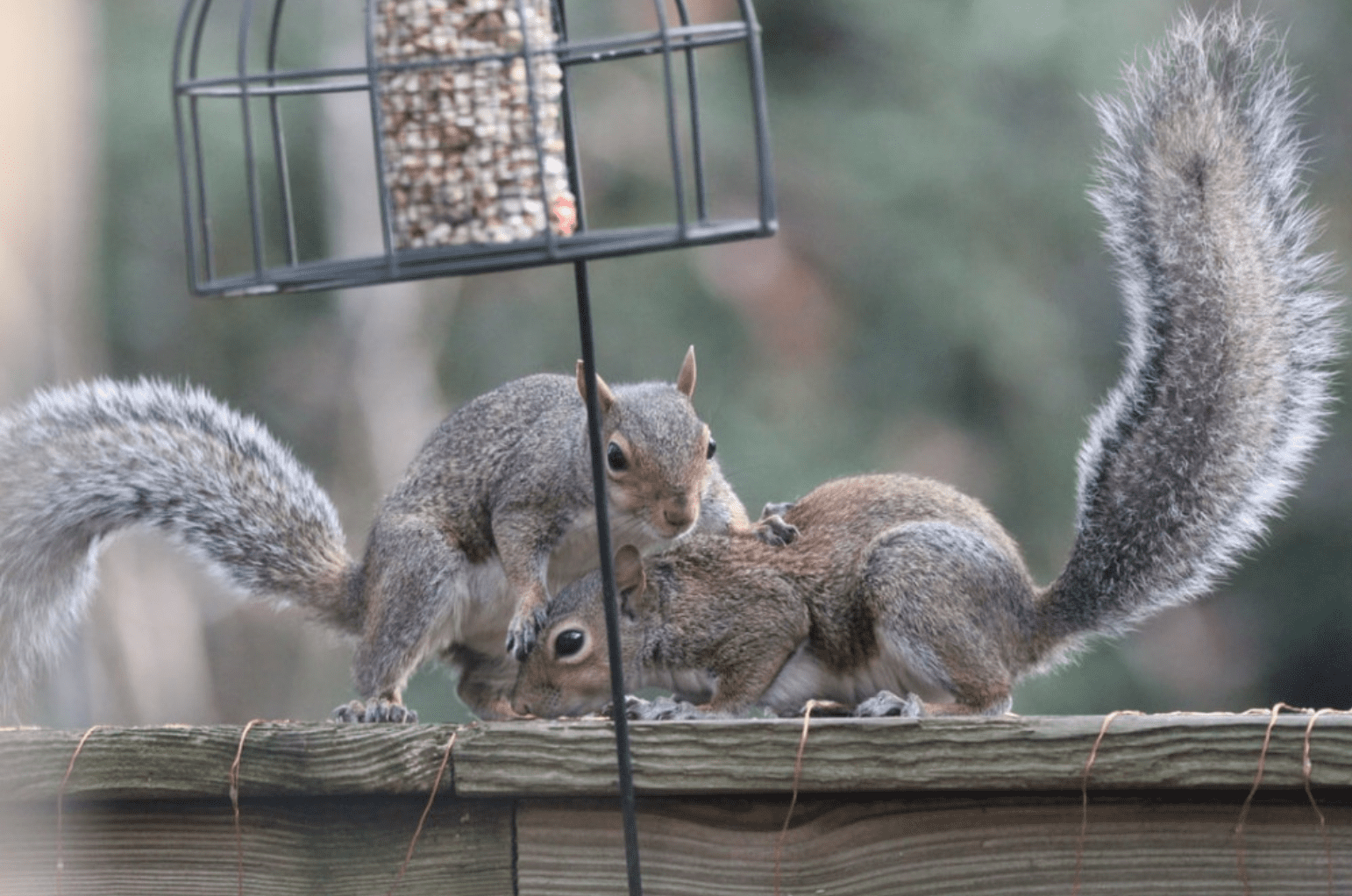
Hi There! My hubby and I retired to our forever home last June. While our mailing address is Harbeson, DE, we can see Beaver Dam Rd (Lewes) from our front porch. We love it here. We back up to the woods and my neighbor has several feeding stations. We reap those benefits for sure. Currently, I have a hummingbird feeder very close to my house. The locals have returned in full force. They’re a joy to watch. But we did spot a red- headed bird hanging out in the back. Your site helped me identify it as a pileated woodpecker. Thank you for this blog.
I’m delighted to hear that you and your husband are enjoying your retirement in such a beautiful area! Harbeson seems like a lovely place to settle down and enjoy the delights of nature. It must be such a treat to be so close to the woods and have wildlife so close at hand.
I’m thrilled that my blog could assist you in identifying the pileated woodpecker – they are truly fascinating birds. It’s such a pleasure to know that my content is not just being read, but also helping nature enthusiasts like you!
Thank you so much for your kind words and for sharing a slice of your life with us. Happy birdwatching!